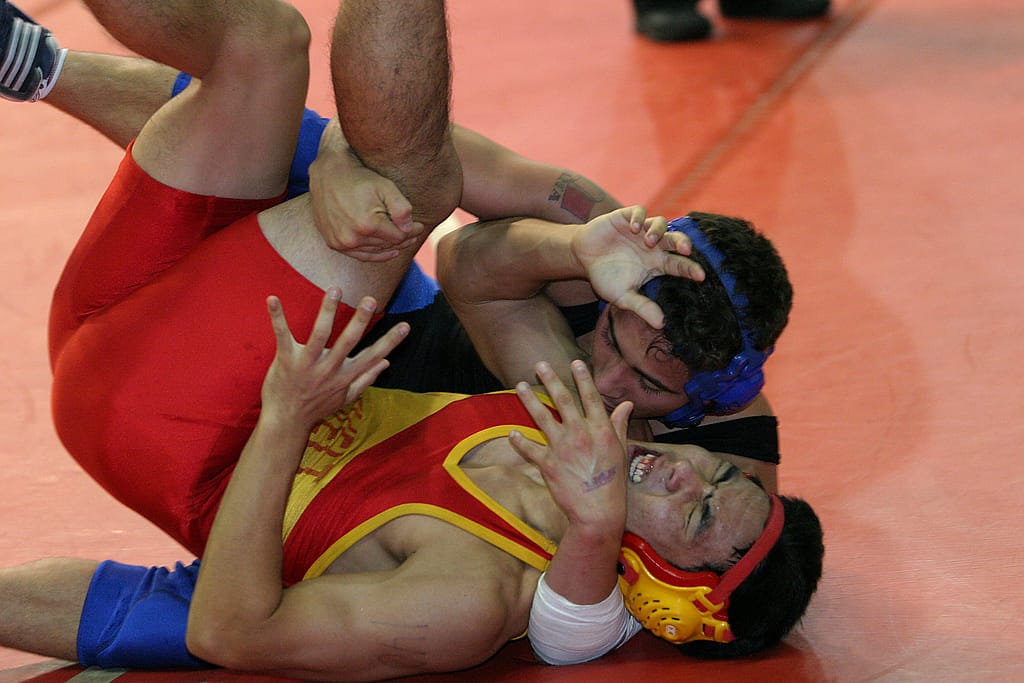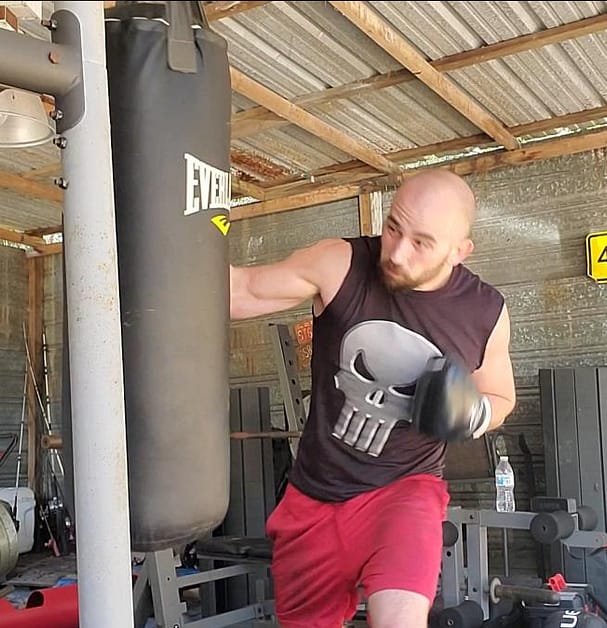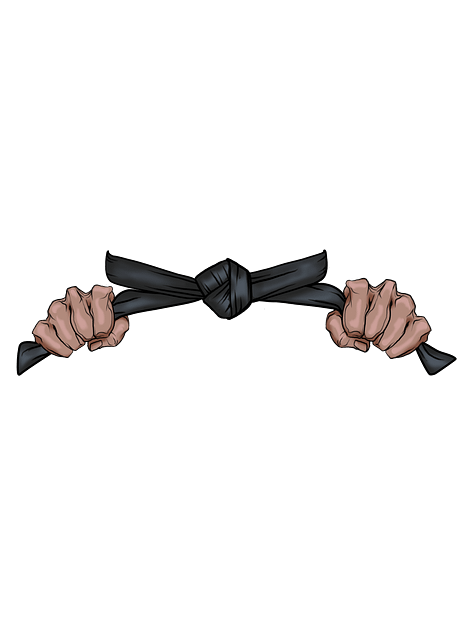The Wrestling Cradle
The wrestling cradle move is one of the first pinning combinations any young wrestler will learn. It was (and is) one of my favorite holds because the cradle can be hit in many situations and positions.
There are so many types of cradles and cradle variations that I am sure to miss several.
A wrestling cradle hold gets it’s name because it resembles a parent cradling a child in their arms.

Here is an example of what cradling a child looks like. I will explain the wrestling cradle technique below, which will also explain where the name comes from.
Cradle Wrestling Move
The actual cradle hold usually involves the attacking wrestler to have his (or her) hands locked or close to locked. The defending wrestler usually is going to have his spine curved, very much as if they were doing an ab crunch.
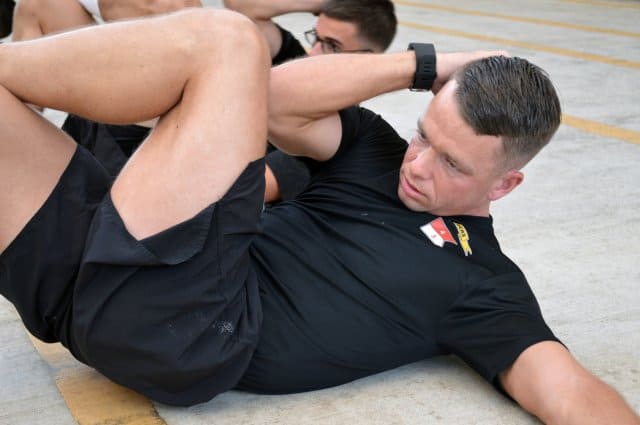
This is what the end result of most wrestling cradles and cradle variations look like
However, any time your head is near your knee, voluntarily or otherwise, you are in danger of a cradle.

Here is an example of your head being too close to your knee.
Here is the description from Wikipedia of the cradle.

Using the cradle to beat the guard
Before I get started here and anger submission grapplers and give every high school wrestler too much hope, I need to give you two rules, as I see them.
- You need to get the takedown (or get on top somehow)
- You better get to half guard or better once you are on top
If you don’t know what half guard is, let me show you.
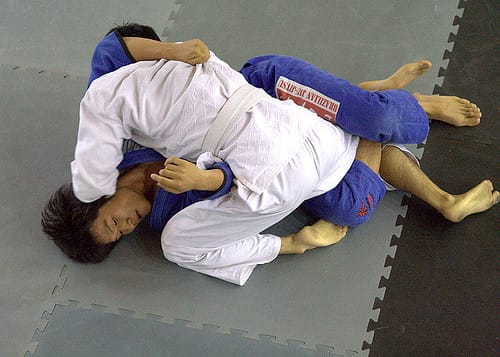 The guy in white is in “Top Half Guard” the guy on bottom is in “Bottom Half Guard“. “Guard” in Brazilian Jiu Jitsu basically refers to your leg position in relation to your opponent. The term “Mount” also has the same reference and usually describes the position you are in ONCE you clear the defensive guys legs.
The guy in white is in “Top Half Guard” the guy on bottom is in “Bottom Half Guard“. “Guard” in Brazilian Jiu Jitsu basically refers to your leg position in relation to your opponent. The term “Mount” also has the same reference and usually describes the position you are in ONCE you clear the defensive guys legs.
Full mount, side mount etc…
If you can get to the top half guard you can apply the cradle technique. Specifically the near side cradle.
The near side wrestling cradle is shown here in a wrestling situation.
Jiu Jitsu vs the cradle
You will not find many situations like the video I just posted above. In fact, giving up your back is one of the last things you want to do in Jiu Jitsu, mixed martial arts or in a real fight.
Trained grapplers with mixed martial arts, Judo or Jiu Jitsu experience, will often go into a guard position.
In fact, the military now trains their recruits in all of the basic BJJ (Brazilian Jiu Jitsu) and MMA (Mixed Martial Arts) positions. Here is an example of what is called “full guard”.
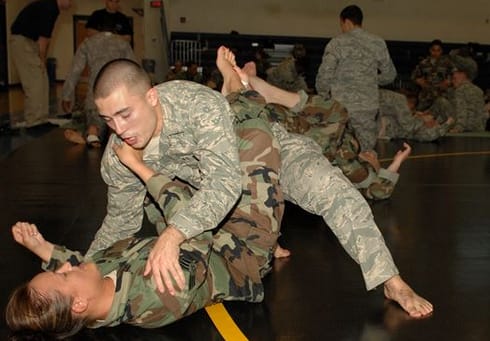 The soldier on the bottom is in “full guard”. She has limited her opponents movement by keeping him confined and based on her attackers actions, she can reverse position, get free and stand up or even finish the fight in her favor from the bottom.
The soldier on the bottom is in “full guard”. She has limited her opponents movement by keeping him confined and based on her attackers actions, she can reverse position, get free and stand up or even finish the fight in her favor from the bottom.
Here is an example of a service member learning to finish an opponent from the bottom (guard) using leverage and the strength of her legs.

So how does this apply to the cradle technique?
As I said above already, you should be on top somehow and you have to get by the guard. Specifically, the FULL GUARD. Easier said than done by the way!
How do I use the cradle versus the half guard?
I feel the cradle is underused since the opportunity actually presents itself quite often.
Neal Melanson put out a very nice tutorial on using the cradle in grappling and it really goes into detail.
I have found that once you have the position you are looking for, which is your opponents head anywhere near his knee, you can think about the cradle. Even if you don’t you can force it. I will post some vids to show you what I mean after the Melanson video.
Another video series of the wrestling cradle for grappling.
Getting into the wrestling cradle position
There are several ways to setup the wrestling cradle series in grappling and MMA.
From the top, this is done when your opponent keeps his base but tries to get up with his head to close to his knee. There is already a video with an example of that technique above.
Another way to get the cradle from the top is when your opponent has for some reason remained flat.
This cradle assumes the opponent is flat on his belly. This is not necessarily the best option in MMA, submission grappling or in a real fight, but I just wanted to show the versatility of the cradle hold.
You can do the cradle hold when the opponent tries to take YOU down from a standing position.
This video shows how to get into the cradle position once the opponent has dove (or “shot”) for your legs or you have forced them into that position in some way. This is off of move called the front headlock which is an offensive series and a defensive series. The front headlock is a great way to get into a cradle situation and it offers you many additional opportunities.
I did mention the front headlock, which is a great transition to the cradle, but as I said above the front headlock is a weapon unto itself.
This is a (very grainy) video of Matt Hughes using the front headlock to choke a very good and athletic BJJ black belt in the UFC. You can also see that had the choke failed, the near side cradle was right there for him.
Remember, “head close to knee” and Hughes certainly had that transition available if he needed it.
Cradle variations
The wrestlers cradle can be achieved from many positions. Some will be useful in MMA and grappling competitions and some won’t be as effective. Then again, I am not necessarily as creative as everyone else, so I will show you some variations of the cradle that you might be able to use as a wrestler or martial artist.
This move is called the spladle. Same idea, different position, get the head near the knee.
This is a leg cradle, again the wrestler on top goes for a conventional cradle then transitions to a leg cradle.
There are several other ways to get into a wrestling cradle but these videos should give you an idea of how versatile the hold is.
I hope you enjoyed this piece and if you did, give it a share to someone who might find it useful.

